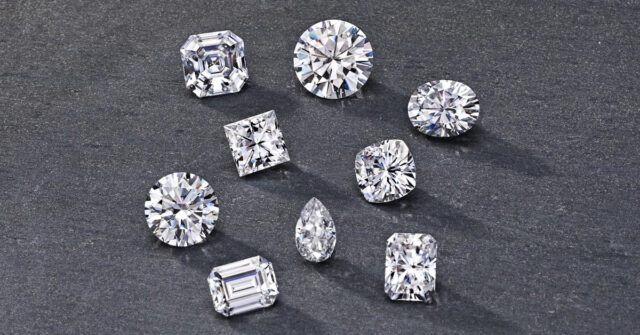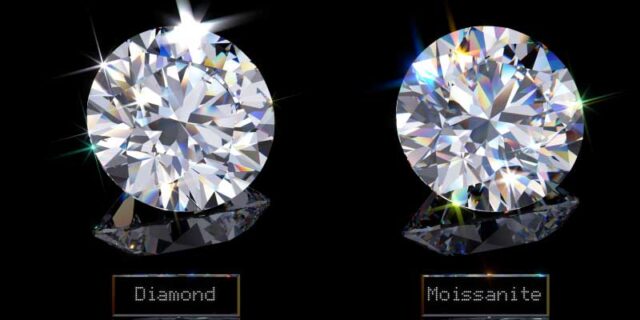
Diamonds are known for their beauty, durability, and rarity. They have long been a symbol of love and commitment, representing eternal and unbreakable bonds. However, not everyone can afford a natural diamond, and some may prefer a more ethical and sustainable option.
Moissanite is a naturally occurring mineral that was first discovered in 1893 by French scientist Henri Moissan. It was initially mistaken for diamonds but later found to be composed of silicon carbide. Moissanite has a similar appearance to diamonds, with a brilliance and fire that is comparable to natural ones. In fact, it is often referred to as an “alternative” or “simulant,” but it is not a fake diamond, and it has its unique properties that set it apart from diamonds.

One of the most significant benefits of moissanite diamonds is their affordability. While natural diamonds can cost thousands of dollars, moissanite ones are a fraction of the price, making them an attractive option for those on a budget. This affordability makes it possible for people to purchase larger pieces or use them in more elaborate designs.
A moissanite diamond is also more ethical and sustainable than a natural one. Mining often involves labor exploitation, environmental degradation, and conflict. On the other hand, moissanite is produced in a laboratory setting, which eliminates these issues. Moissanite production is also less harmful to the environment as it does not involve open-pit mining or the use of toxic chemicals. This means that moissanite diamonds are a more responsible and conscientious choice for those who care about social and environmental issues.
Another advantage of moissanite diamonds is their durability. They are almost as hard as diamonds, ranking at scale of hardness compared to its rating of 10. This means that they are resistant to scratches and chips, making them ideal for daily wear. They also have a high heat tolerance and can withstand high temperatures, making them an excellent choice for those who work with their hands or engage in outdoor activities.

They are also more brilliant than natural ones. Their refractive index is higher, which means they reflect more light and have more fire and sparkle than diamonds. They also have a higher level of dispersion, which creates a rainbow of colors in the stone, adding to its beauty and uniqueness.
They are available in a range of shapes and sizes, from round brilliant cuts to emerald cuts and ovals. They can be colorless or have a slight yellow or green tint, but this is often imperceptible to the naked eye. They can also be cut in a variety of styles, from classic to modern, and can be used in engagement rings, wedding bands, earrings, pendants, and more.
In terms of care and maintenance, they are relatively easy to care for. They can be cleaned with a soft cloth and mild soap, and they do not require any special treatments or solutions. Unlike natural diamonds, moissanite ones do not need to be inspected for inclusions, as they are lab-created and do not have the same characteristics as natural diamonds.

In conclusion, offer a range of benefits over natural ones, from their affordability and ethical production to their durability, brilliance, and beauty. They are a smart and conscious choice for those who want a stunning and sustainable gemstone that does not compromise on quality or aesthetics. Whether you’re looking for an engagement ring, a wedding band, or a special piece of jewelry, they are an excellent option that will stand the test of time and make you feel good about your purchase. So, the next time you’re in the market for a diamond, consider moissanite ones and all the benefits they have to offer.













